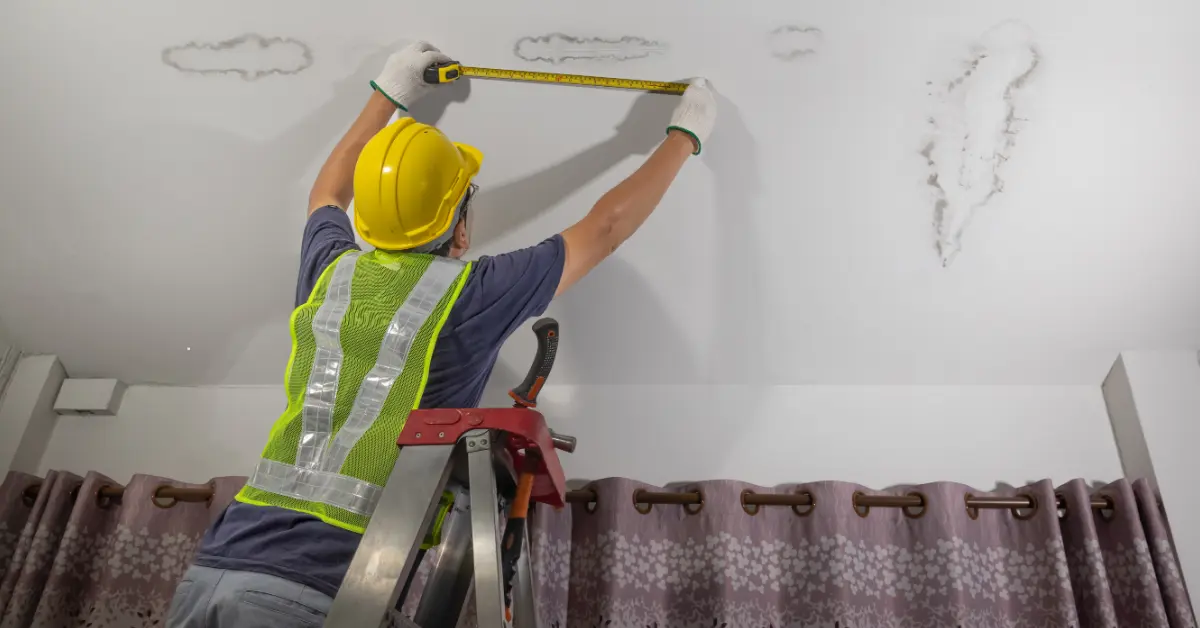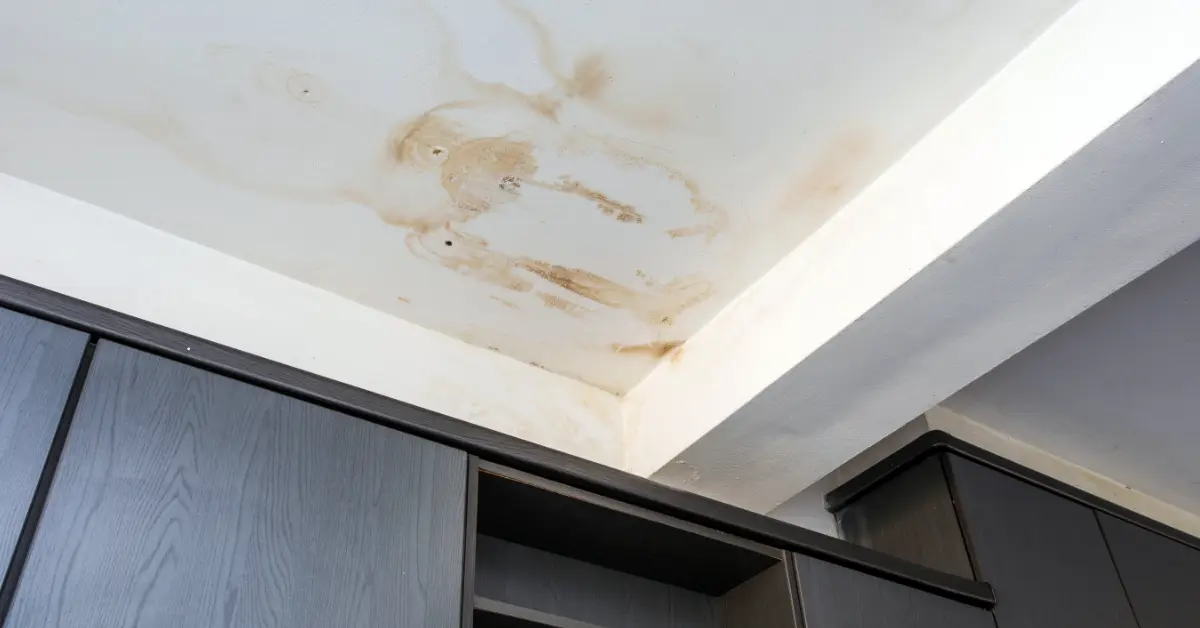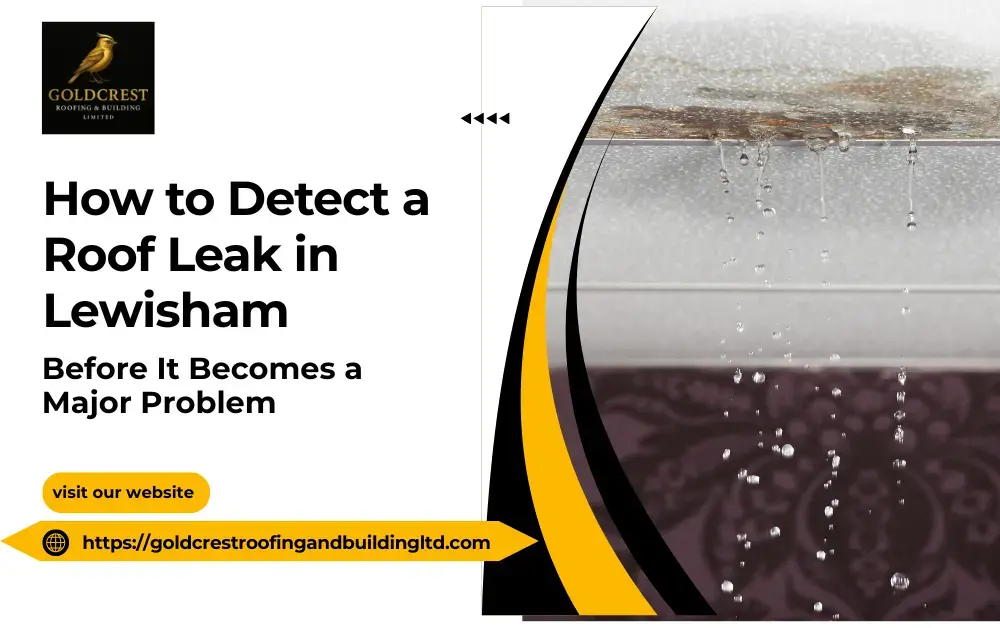A leaking roof may start as a small problem, but if it goes unnoticed, it can lead to serious and costly damage. In many homes across Lewisham, roof leaks often become apparent only when water starts dripping inside. By then, the damage may already have spread through the ceiling, walls, or even the home’s structure.
The good news is that by learning how to detect a roof leak early, you can prevent small leaks from escalating into costly repairs.
Why It’s Important to Spot Roof Leaks Early
Detecting a leak early isn’t just about avoiding inconvenience; it’s also about preventing damage. It helps you:
- Save money on repairs: Small issues can be fixed quickly, while major damage often requires replacing large sections of roofing.
- Protect your property: Water damage can weaken timber, plaster, and brickwork.
- Keep your home safe and healthy: Damp areas create the perfect environment for mould and mildew.
Knowing how to detect roof leaks early gives you peace of mind and keeps your home protected.
How to Detect a Roof Leak

If you’re wondering how to find a leak in your roof, here are the most common signs:
1. Water Stains on Ceilings and Walls
Brown, yellow, or discoloured patches are among the most common signs of roof leak. These marks usually spread in circles and appear worse after heavy rain.
2. Damp or Musty Smells
If certain rooms smell damp or musty, water may be entering your roof space. This hidden moisture is one of the key signs of roof damage.
3. Dripping Sounds During Rain
Hearing a drip inside when it rains is an urgent signal. Even a small gap in your roof can allow water in, and fixing a leaky roof should be a top priority.
4. Peeling Paint or Bubbling Plaster
Moisture trapped under paint or plaster makes it peel, bubble, or crack. This is a strong roof signage warning of hidden leaks.
5. Sagging in Ceilings or Roof Areas
A sagging ceiling means water is collecting above. This is one of the most dangerous 5 signs your roof is leaking and should be repaired immediately.
Where Roof Leaks Usually Start
Leaks often begin in areas of the roof that are weaker or more exposed. Some of the most common places include:
- Around chimneys and skylights: Faulty flashing can let water seep in.
- Roof valleys and joints: Water naturally flows to these areas and can break through if not sealed properly.
- Blocked gutters and downpipes: Overflowing water can back up and soak under the roof tiles.
- Flat roof sections: After a storm, water may pool on flat surfaces and eventually break through.
These hidden areas are worth checking regularly to avoid bigger roof problems.
How to Check for Roof Leaks

Inside Your Home
- Enter the attic or loft to inspect for damp spots, wet insulation, or daylight coming through cracks.
- Inspect ceilings and walls closely for stains, cracks, or bubbling paint.
Outside Your Home
- From the ground, check the roof for broken tiles, cracked flashing, or sagging areas.
- Inspect your gutters and downpipes to ensure they are clear.
- After a roof storm, check for missing shingles or visible damage.
Safety First
It’s not recommended to climb onto your roof without proper equipment. If you think you may have roof issues, it’s always safer to call a professional roofer.
Weather and Seasonal Roof Risks in Lewisham
The local weather in Lewisham can play a big role in roof damage:
- Heavy rain: Finds weak points and seeps into small cracks.
- Storms and high winds: Can tear away tiles or shift flashing.
- Winter freezing and thawing: Expanding ice can widen existing cracks.
After severe weather, a professional inspection can prevent small roof problems from becoming major repairs.
When to Call a Professional Roofer
Even small leaks should not be ignored. Professional roofers in Lewisham can:
- Inspect your roof safely and thoroughly
- Identify both visible and hidden leaks
- Carry out fast, reliable roof leak repair
- Provide long-term solutions to avoid recurring roof issues
If you notice any of the common roof problems listed above, it’s best to get expert help rather than wait until the situation gets worse.
Conclusion
Delaying a leaking roof is never a good idea; what starts as a small issue can quickly turn into severe damage. Spotting the early signs of roof damage, such as damp patches, peeling paint, or musty smells, allows you to act before repairs become costly. When it comes to fixing a leaky roof, calling trusted roofers in Lewisham is the safest choice.
Local experts understand the area’s weather conditions and building styles, ensuring your roof is repaired properly and protected for the long term. By taking prompt action and relying on professionals, you can keep your home safe, dry, and secure for years to come.
FAQs
1. How long can a roof leak go unnoticed?
A roof leak can go unnoticed for weeks or even months, especially if the leak is small and hidden in hard-to-see areas. Over time, it can cause significant damage to your home if not addressed promptly.
2. Find roof leaks with infrared?
Infrared cameras can detect temperature differences caused by water trapped in your roof. These devices can help identify leaks that are not visible to the naked eye by showing moisture buildup inside your roofing materials.
3. How to find a roof leak from the outside?
Look for missing or damaged shingles, cracked flashing, or debris blocking your gutters. Inspect roof valleys and around chimneys or skylights where leaks are most likely to occur.
4. How can you tell where a roof leak is coming from?
Trace the water stains on the ceiling or walls back to the roof, as leaks typically flow downward. If possible, inspect the roof directly for visible damage, such as cracks, holes, or loose shingles, that may be allowing water in.

